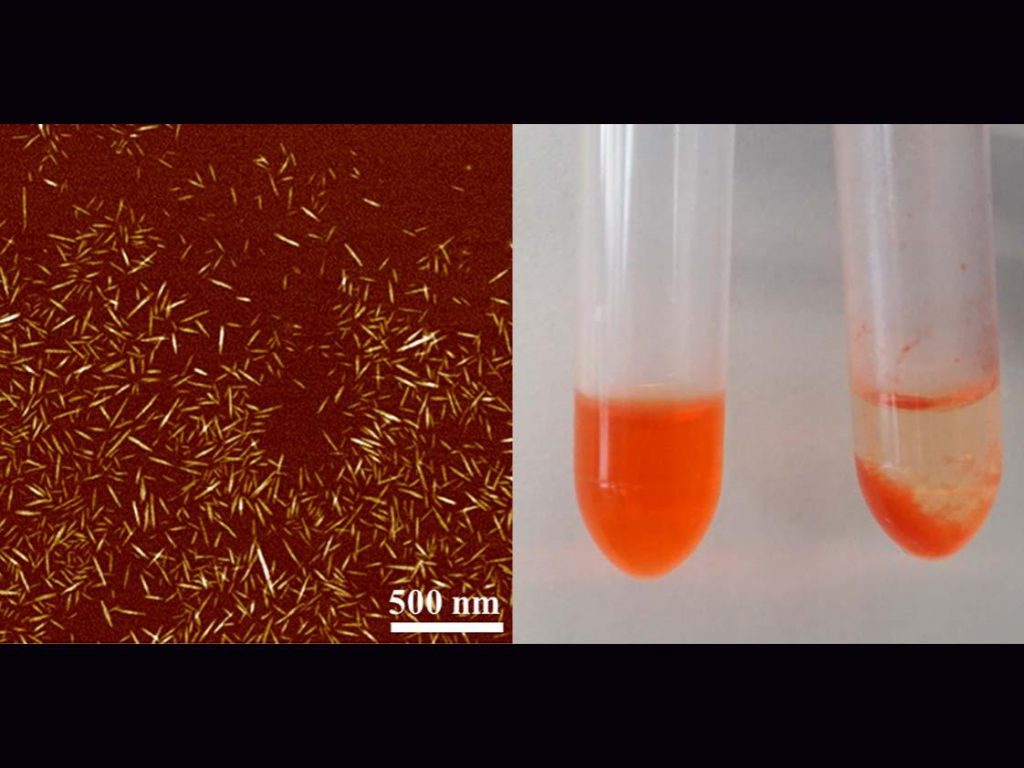
Chemotherapy has saved millions of lives across the United States — but many cancer survivors experience painful and debilitating side effects from the treatment. And, even with the advances in drug-free cancer treatment methods, chemotherapy remains the standard. However, a group of Penn State researchers has developed a new class of nanomaterials engineered to capture chemotherapy drugs before they interact with healthy tissue, lessening side effects and improving quality of life for cancer patients.
Leading the research at Penn State is Dr. Amir Sheikhi, an assistant professor of chemical engineering and biomedical engineering. He is the founding director of Bio-Soft Materials Laboratory, where he conducts research on micro- and nanoengineering soft materials, such as hydrogels and colloidal nanosystems, for addressing some of the pressing challenges in health care — in this case, chemotherapy drugs attacking healthy tissue in addition to tumor cells.
“Although chemotherapy remains one of the most common cancer treatments in the world, the severe side effects of chemotherapy drugs impose serious concerns to cancer patients. In many cases, the chemotherapy can be localized to maximize the drug effects; however, the drug systemic circulation induces undesirable side effects,” Sheikhi explained. “To overcome the challenges associated with current drug capture materials, specifically the low removal capacity, nanoparticles with a large density of functional groups appear very promising. This inspired us to conduct this research and nanoengineer the most abundant biopolymer in the world — cellulose — for this purpose.”
How does it work?
The research, published in the March issue of Materials Today Chemistry, is based on hairy cellulose nanocrystals: nanoparticles developed from the main component of plant cell walls and engineered to have immense numbers of polymer chain “hairs” extending from each end. These hairs increase the potential drug capture capacity of the nanocrystals significantly beyond that of conventional nanoparticles and ion exchange resins.
“This technology can set the stage for next-generation, low-cost drug capture devices.”
“The emergence of hairy CNCs, decorated with highly functionalized disordered cellulose chains [hairs] at both ends that are synthesized via the controlled oxidation of cellulose fibers, has opened new opportunities for engineering nanoadsorbents with significantly higher removal capacities than other bio-based materials,” Sheikhi added. “This technology can set the stage for next-generation, low-cost drug capture devices.”
To produce the hairy cellulose nanocrystals capable of capturing chemotherapy drugs, the researchers chemically treated cellulose fibers found in softwood pulp and imparted a negative charge on the hairs, making them stable against the ionic composition of blood. The nanocrystals’ binding efficacy was tested in human serum, the protein-rich portion of blood that does not contain red or white blood cells or platelets. For every gram of hairy cellulose nanocrystals, more than 6,000 milligrams of DOX were effectively removed from the serum.

“Developing materials that can specifically capture clinically relevant concentrations of chemotherapy drugs … without imposing adverse effects on cells is of particular challenge,” Sheikhi said. “We found that biocompatible anionic hairy CNCs remove more than 6,000 μg of DOX, one of the most common chemotherapy drugs, per 1 mg of nanoparticles. This is a more than 3,200% improvement compared with some of the most recent nanoadsorbents, such as DNA-based materials.”
Sheikhi also noted the nanocrystals had no harmful effects on red blood cells in whole blood or on cell growth in human umbilical vein endothelial cells.
Life-changing possibilities
In the published paper, the researchers indicate that more than 39% of men and women are diagnosed with cancer at some stage in their lifetimes and more than 85% will suffer from one or more chemotherapy side effects, including anemia, repeated infections, hair loss, jaundice and fever. The advancement of this study can have life-altering implications for chemotherapy patients, but this scientific advancement can also be beneficial outside of health care.
“The advancement of this study can have life-altering implications for chemotherapy patients, but this scientific advancement can also be beneficial outside of health care. The advancement of this study can have life-altering implications for chemotherapy patients, but this scientific advancement can also be beneficial outside of health care.”
“These novel nanomaterials may have application in transparent and superhydrophobic films, security packaging, ion scavengers, hydrogels, rheology modifiers, biomimetic mineralization and much more,” Sheikhi said. “Developing medical devices based on this biomaterial is our next step to get one step closer to translating this technology from the lab bench to bedside.”
In November, Dr. Sheikhi was named as one of the nine emerging leaders in chemical and biomedical engineering worldwide by the editorial board of Bioengineering & Translational Medicine, the flagship journal of the American Institute of Chemical Engineers.
For more information, visit Dr. Amir Sheikhi’s Bio-Soft Materials Lab at SheihkiLab.com or visit Dr. Sheikhi’s Google Scholar profile.






